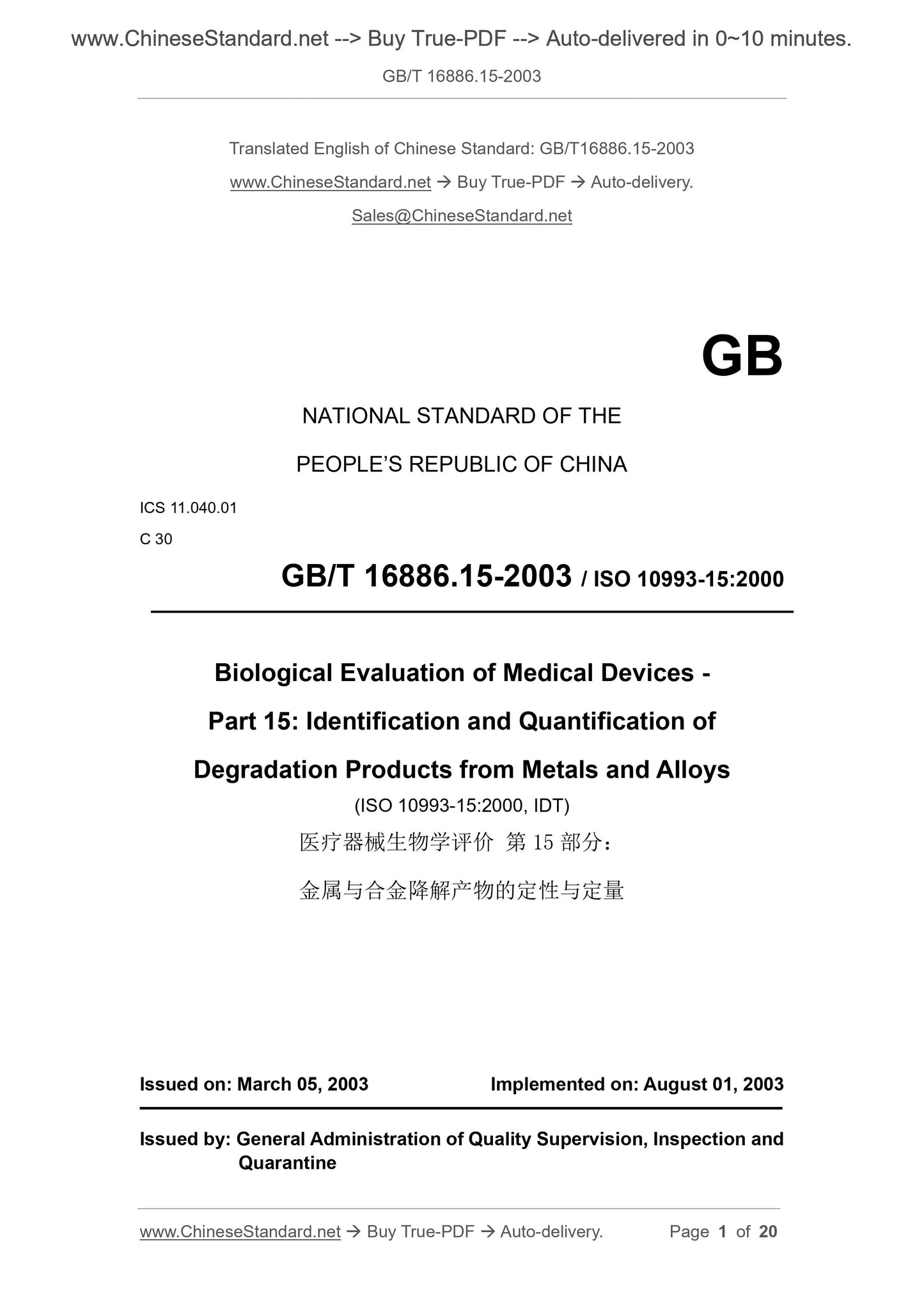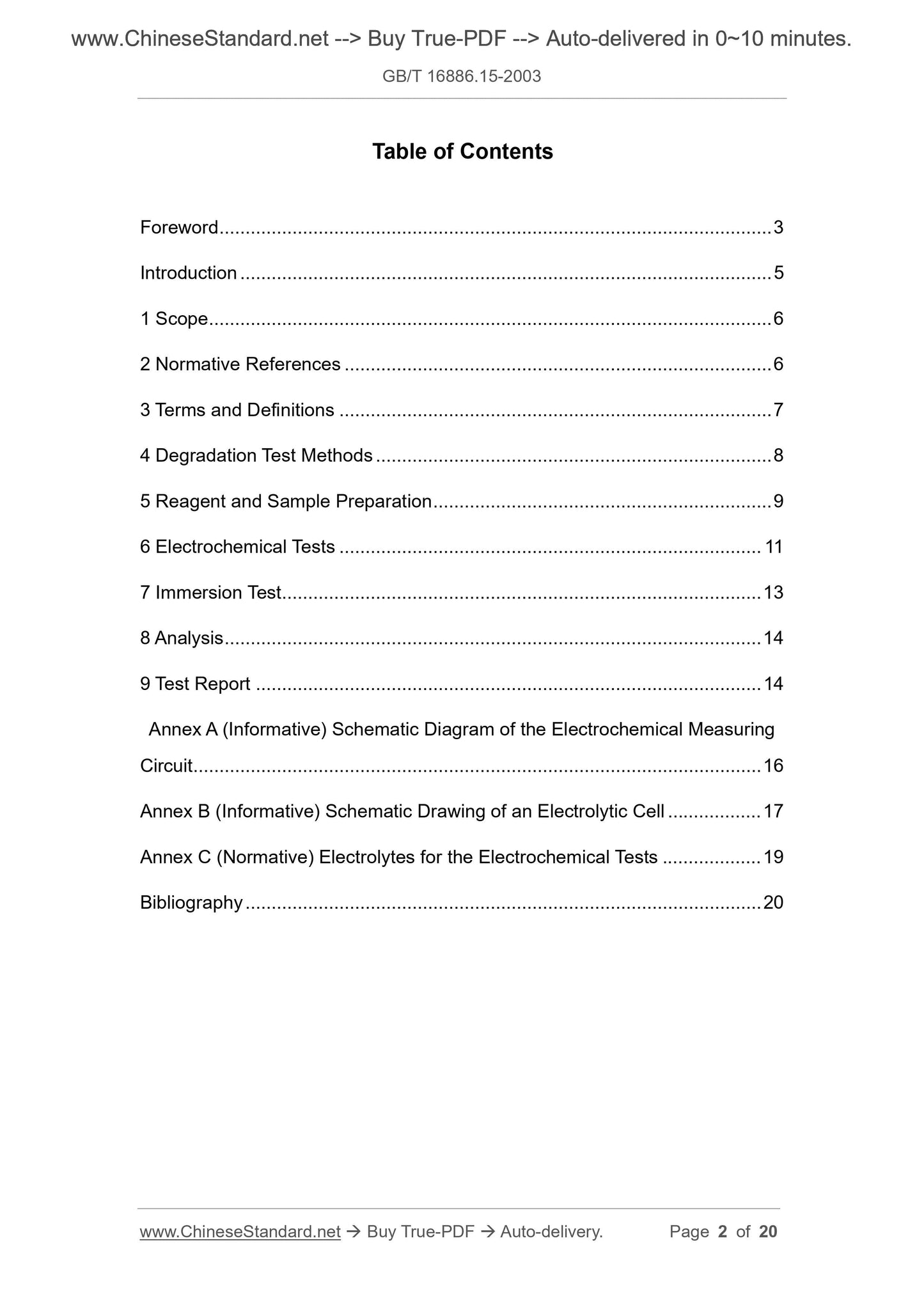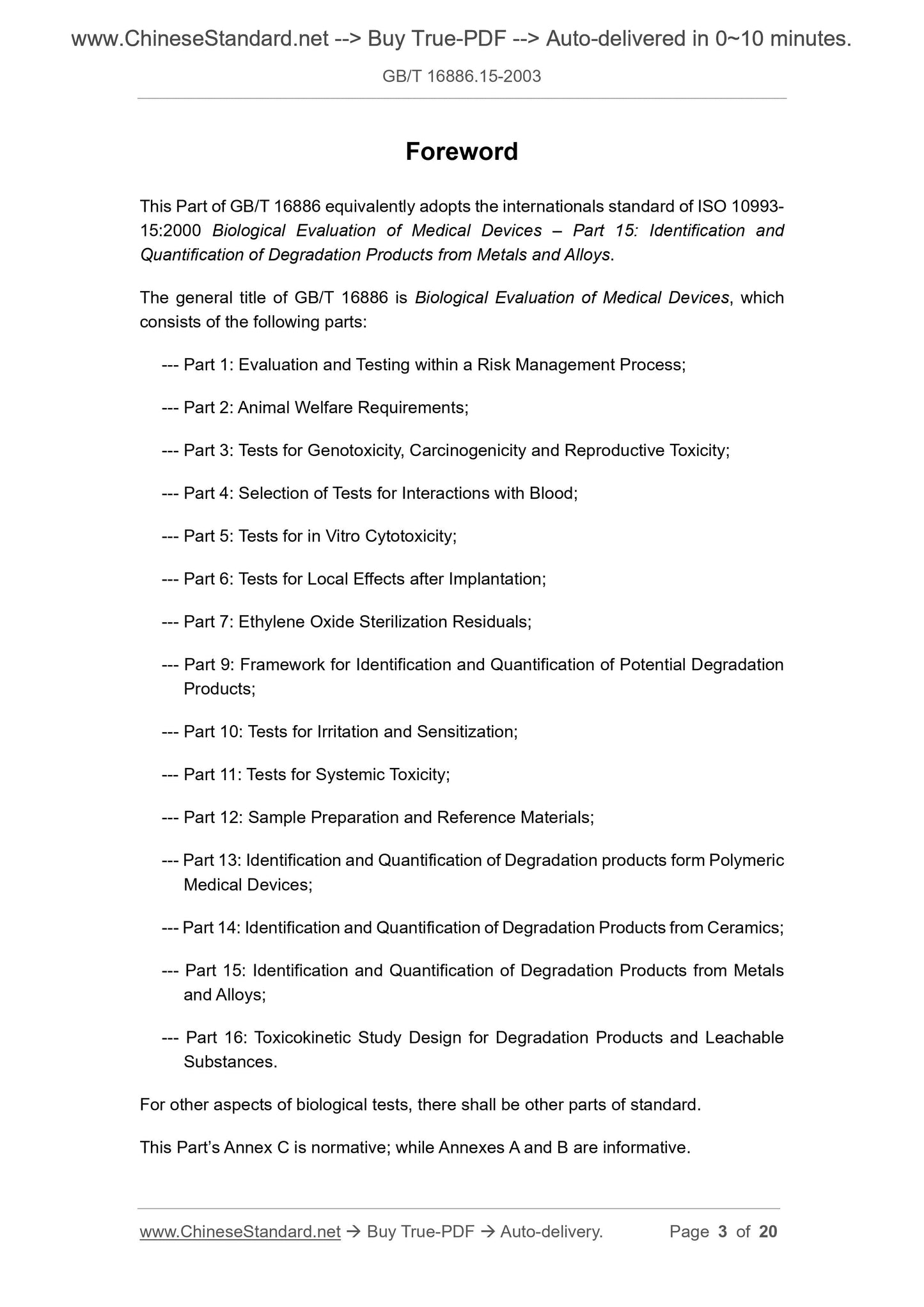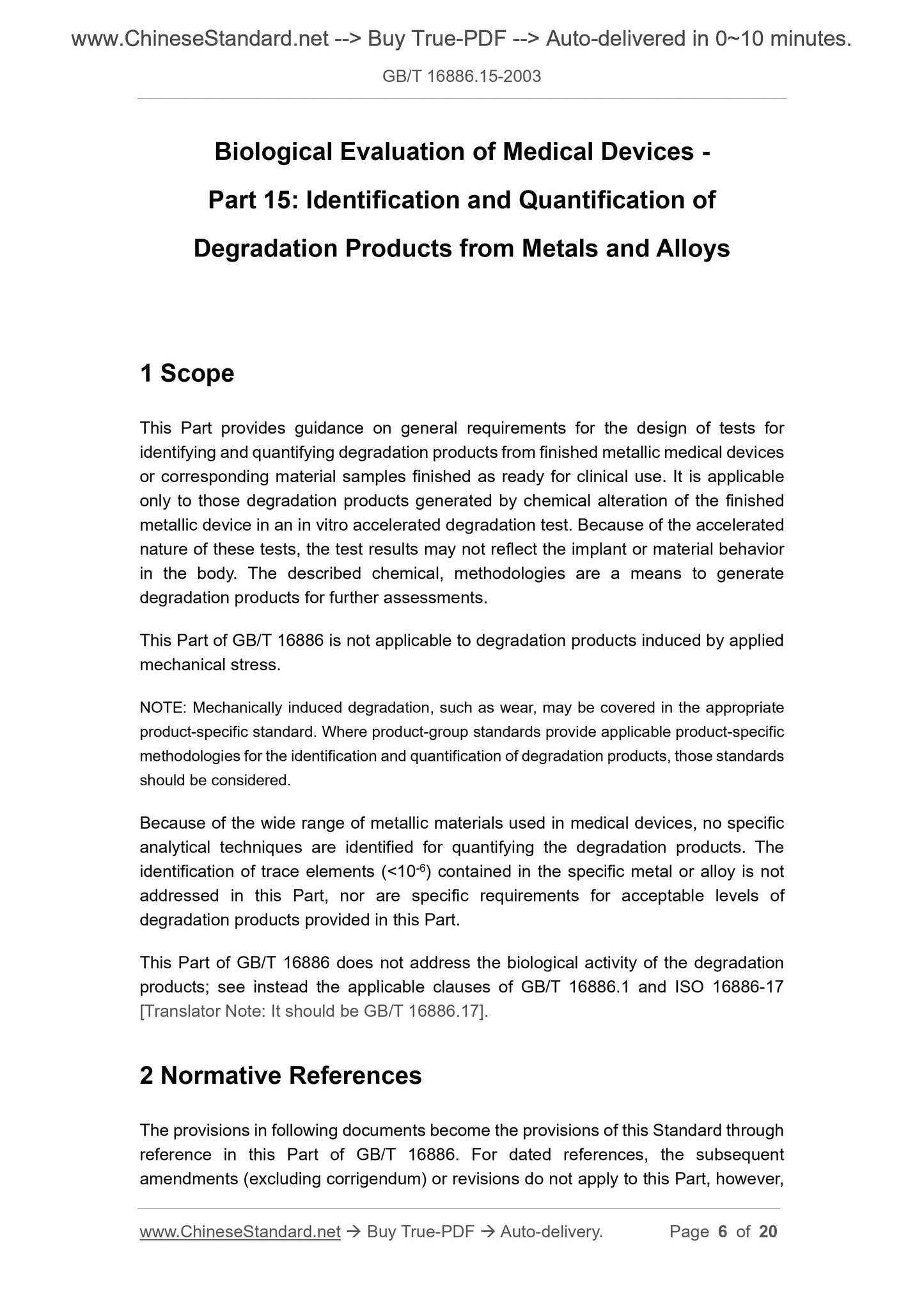1
/
of
4
PayPal, credit cards. Download editable-PDF and invoice in 1 second!
GB/T 16886.15-2003 English PDF (GB/T16886.15-2003)
GB/T 16886.15-2003 English PDF (GB/T16886.15-2003)
Regular price
$150.00
Regular price
Sale price
$150.00
Unit price
/
per
Shipping calculated at checkout.
Couldn't load pickup availability
GB/T 16886.15-2003: Biological evaluation of medical devices -- Part 15: Identification and quantification of degradation products from metals and alloys
Delivery: 9 seconds. Download (and Email) true-PDF + Invoice.Get Quotation: Click GB/T 16886.15-2003 (Self-service in 1-minute)
Newer / historical versions: GB/T 16886.15-2003
Preview True-PDF
Scope
This Part provides guidance on general requirements for the design of tests foridentifying and quantifying degradation products from finished metallic medical devices
or corresponding material samples finished as ready for clinical use. It is applicable
only to those degradation products generated by chemical alteration of the finished
metallic device in an in vitro accelerated degradation test. Because of the accelerated
nature of these tests, the test results may not reflect the implant or material behavior
in the body. The described chemical, methodologies are a means to generate
degradation products for further assessments.
This Part of GB/T 16886 is not applicable to degradation products induced by applied
mechanical stress.
NOTE. Mechanically induced degradation, such as wear, may be covered in the appropriate
product-specific standard. Where product-group standards provide applicable product-specific
methodologies for the identification and quantification of degradation products, those standards
should be considered.
Because of the wide range of metallic materials used in medical devices, no specific
analytical techniques are identified for quantifying the degradation products. The
identification of trace elements (< 10-6) contained in the specific metal or alloy is not
addressed in this Part, nor are specific requirements for acceptable levels of
degradation products provided in this Part.
This Part of GB/T 16886 does not address the biological activity of the degradation
products; see instead the applicable clauses of GB/T 16886.1 and ISO 16886-17
[Translator Note. It should be GB/T 16886.17].
Basic Data
| Standard ID | GB/T 16886.15-2003 (GB/T16886.15-2003) |
| Description (Translated English) | Biological evaluation of medical devices--Part 15: Identification and quantification of degradation products from metals and alloys |
| Sector / Industry | National Standard (Recommended) |
| Classification of Chinese Standard | C30 |
| Classification of International Standard | 11.040.01 |
| Word Count Estimation | 14,193 |
| Date of Issue | 3/5/2003 |
| Date of Implementation | 8/1/2003 |
| Adopted Standard | ISO 10993-15-2000, IDT |
| Issuing agency(ies) | General Administration of Quality Supervision, Inspection and Quarantine of the People Republic of China |
| Summary | This Standard specifies the degradation products of qualitative and quantitative tests. This standard applies only to those in vitro degradation products accelerated degradation test by chemical changes in the finished metal instrument produced. |
Share







